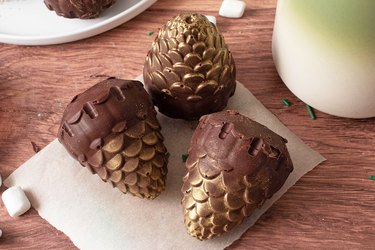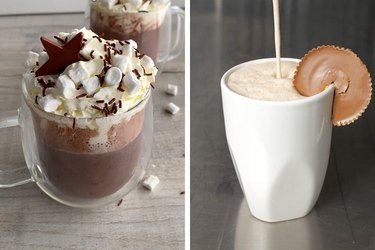
If you're in the mood for a cup of hot chocolate, the craving is easy to satisfy. While store-bought mix works in a pinch, why not spread your wings a little and hold out for the good stuff by trying your hand at homemade hot chocolate? Whether you start with cocoa powder (hot cocoa) or dark chocolate (true hot chocolate), the real thing is infinitely better than instant. And we've got you covered with our tips and tricks for making a truly memorable hot chocolate that'll up your cocoa game all season long!
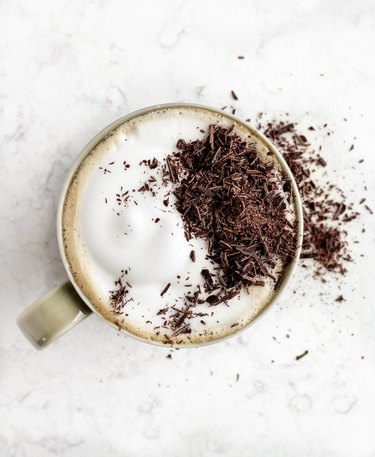
Video of the Day
How do I make a REALLY good hot chocolate or hot cocoa?
You'll see some variation between recipes, but here's how to make hot chocolate with either cocoa or chocolate. It's pretty straightforward!
Video of the Day
For hot cocoa: Measure your cocoa and sugar to taste, or as directed in recipe. Add a small quantity of your chosen milk, still cold, and stir it to a smooth paste. At this point, you can stir hot milk into your paste to finish the beverage (ideal for a single serving), whisk hot milk into the paste and stir that warmed-up mixture into hot milk (ideal for larger quantities) or whisk the paste into cold milk and bring it up to temperature. Stir attentively and use a low to medium heat—whatever your patience will allow.
For hot chocolate: Start by chopping or grating chocolate. Alternatively, buy it in small morsels, either as chocolate chips or from a commercial supplier in the form of callets or pistoles (similarly small pieces of chocolate but without the extra ingredients that help chocolate chips hold their shape). Pour a small quantity of hot milk over chopped chocolate and stir vigorously until chocolate has mostly melted, then continue adding hot milk (and/or hot water) until all of pieces have melted and chocolate is thinned to a drinkable consistency.
What's the difference between hot chocolate and hot cocoa?
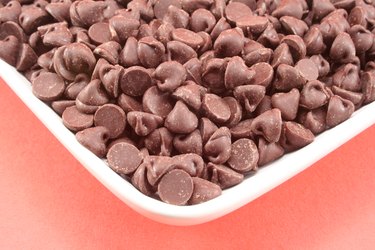
There certainly is a difference, though both methods can lead to a mug of satisfying chocolaty goodness. In the case of true hot chocolate, you're melting and thinning chocolate until it reaches a drinkable consistency. It will usually be richer than cocoa and, depending on the quality of the chocolate you've chosen, substantially more complex. Starting with semisweet chocolate chips will yield a relatively sweet and uncomplicated finished beverage, while an artisanal dark chocolate (or even a premium bittersweet chocolate bar) will offer more subtlety.
There are differences between cocoas as well, though they're generally less distinctive. You'll always want to start with unsweetened cocoa powder, not a pre-sweetened "hot cocoa mix" (which is what we're trying to avoid). Alkalized or "Dutch process" chocolate will give you a smoother finished drink, while a natural or a premium single-estate cocoa (often marketed as "cacao" to differentiate from mass-market cocoa) will have a more intense flavor but a slightly "chewy" texture that might leave a sediment layer at the bottom of your cup.
Tip
Making hot cocoa ahead of time gives cocoa powder opportunity to become fully hydrated. When your beverage is reheated (or enjoyed cold!), you’ll find it's noticeably smoother.
What kind of milk is best for hot chocolate?
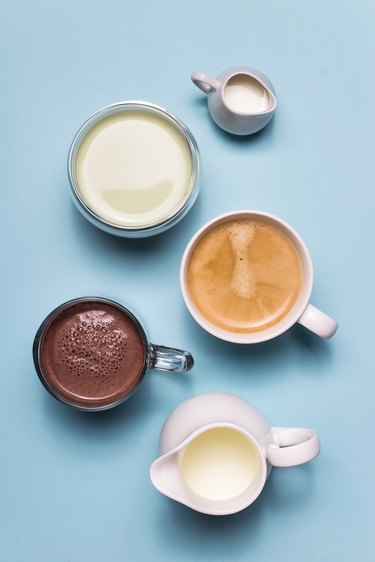
Personal preference factors into this, but it primarily comes down to your choice of cocoa vs. chocolate. Cocoa powder is made by removing much of the fat (cocoa butter) from chocolate—and most of the richness goes with it. With cocoa, you'd use whole milk or partly skimmed, with milk fat compensating for lost cocoa butter. If you're starting with good chocolate, opt for low-fat or nonfat milk or even use part milk and part water. If you can't have conventional dairy products or choose not too, most dairy-free "alt-milks" (almond milk, oat milk, coconut milk) work equally well.
Whether you start with cocoa or chocolate, using a higher-fat milk typically adds richness, while a lower-fat milk (or cutting your milk with water) creates a more intense chocolate flavor. Your own personal "sweet spot" will be somewhere along that continuum.
How hot should my hot chocolate be?

Restaurants and coffee shops tend to serve their beverages at a high temperature—typically 180°F or thereabouts. That's because they're allowing for a degree of cooling before you actually drink the beverage. This is less of a factor with at-home hot chocolate recipes, so you can create your beverage at a more comfortable drinking temperature.
With chocolate, you'll typically enjoy fullest flavor at temperatures between 125°F and 140°F. Below that, your drink won't be warm enough to bring out all the subtleties in its flavor. Above that, it's hot enough to be (for many of us) rather uncomfortable. A second consideration is that chocolate itself is very heat-sensitive, so it might become grainy or develop off-flavors if overheated.
Cocoa is more forgiving, in part because there are fewer subtleties to be lost as temperature shifts up or down. That range of 125°F to 140°F still works best for most palates, but if you're used to hotter beverages, you can certainly go up to a more restaurant-style temperature of 160°F to 180°F.
What equipment do I need to make hot chocolate?
Hot chocolate is a pretty minimalist enterprise, so you probably already have all the equipment you really need in your kitchen. This includes measuring cups and spoons (though you can "eyeball it" in a pinch); a whisk, spatula or wooden spoon for incorporating the ingredients and some way to heat your milk (or water— but we'll get to that). This might include your microwave, a heavy-bottomed pot on the stovetop or a slow cooker (the steam wand on your espresso maker works really well too). That's about all you need, unless you want to splurge on a fancy chocolate frother, but a small whisk or milk frother will work just as well.
What can I add to hot chocolate to boost (or change) its flavor?
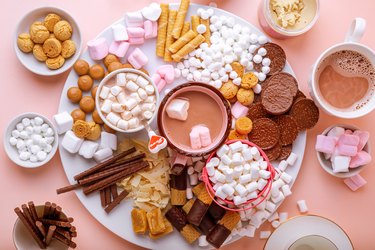
This is where things get fun! On its own, chocolate is one of the world's most popular flavors, but it plays nicely with a lot of other flavors. An obvious starting point for dressing up hot chocolate is adding a hint of vanilla, ideally in the form of a good natural vanilla extract. If you use vanilla beans regularly, dry and save used beans and add them to the pot while making chocolate or cocoa. Another popular complement is cinnamon, one of the ingredients in Mexican hot chocolate.
Realistically, though, any flavor you've ever enjoyed with chocolate is a candidate for hot chocolate. Mint? A slam-dunk, especially at Christmastime. Candied citrus or orange peel? Sure. A pinch of cayenne? It's especially good on a cold day (and takes your beverage in a completely different direction). Any kind of caramel or butterscotch candy can be dissolved into your pot as a mix-in if you're prepared to be patient. If you're a big fan of chocolate and peanut butter together, peanut butter powder is a good addition. A shot of espresso adds depth of flavor and can help offset a too-sweet batch of cocoa. Finally, if you're serving adults only, a variety of spirits—rum, brandy, Irish whisky—work beautifully with chocolate. Use your imagination!
Which garnishes pair best with hot chocolate?

Mini marshmallows are a standard garnish for hot chocolate, but you don't need to limit yourself to those. (FYI: Homemade marshmallows are easier than you think.) A mound of whipped cream makes a fine alternative, and you can sprinkle it with cocoa, cinnamon, cayenne or pumpkin-pie spices to give it a contrasting look (or colorful decorative sprinkles!). You also can't go wrong by matching garnishes with flavorings you've added: A candy cane or crushed candy cane sprinkles pair well with peppermint extract, candied citrus peel works great with orange flavoring and a cinnamon stick will complement Mexican chocolate (or simply add a dash of cinnamon flavor).
Other options include fresh berries, sliced fruit or a long-stemmed maraschino cherry (the proverbial "cherry on top"). Consider milk chocolate shavings or curls (over whipped cream) or even baked goods laid across the rim of the cup, such as fingers of shortbread or pound cake.
Tip
Want to spread the hot chocolate love? A homemade hot chocolate mix (dry ingredients layered in a Mason jar) makes a great gift, as do homemade hot chocolate cocoa bombs.
No matter how you choose to dress up your chocolaty drink, one fact remains: The best hot chocolate is the hot chocolate that offers a moment of sweet, blissful relaxation and a well-deserved treat.
